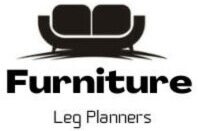Single Table Legs: Enhancing Aesthetic and Functional Appeal
Small details can make a big impact when it comes to interior design and furniture. One such detail that often goes unnoticed but plays an important role in the overall aesthetic and functionality of a table is its legs. Single table legs have gained a lot of popularity in recent years due to their unique design and versatile application. In this article, we will explore the world of 28″ single table legs, their benefits, design variations, and how they contribute to interior decoration. So, let’s dive in!
1. Introduction
In the world of furniture design, innovation knows no bounds. The evolution of table legs is a testament to this fact. 28″ single table leg, as the name suggests, are individual legs that support the structure of the table. They have gained prominence for their ability to transform a mundane piece of furniture into an artistic and functional masterpiece.
2. The Rise of Single Table Legs
Traditionally, tables were designed with four legs for stability. However, this design limited creativity and often resulted in bulky and monotonous furniture. The introduction of 28″single table legs revolutionized the concept of table design by allowing designers to play with asymmetry, negative space, and varied materials.
3. Benefits of Single Table Legs
Single table legs offer a plethora of benefits. Firstly, their unique design adds an element of visual interest to any space. They can be crafted from various materials such as wood, metal, or even acrylic, providing versatility in style. Moreover, 28″ single table legs allow for easy customization and are particularly suitable for compact spaces due to their open and airy design.
4. Design Variations and Styles
The world of single tables legs is incredibly diverse in terms of design. From sleek and minimalist metal legs to intricately carved wooden legs, the options are limitless. These legs can be cylindrical, tapered, hairpin-shaped, or even irregularly shaped, catering to various design preferences.
5. Incorporating Single Table Legs in Interior Design
Single table leg seamlessly blend aesthetics with functionality. They can be incorporated into various interior design styles, such as modern, industrial, and Scandinavian. A single-leg table can serve as a statement piece in a room, drawing attention and sparking conversations.
6. Factors to Consider When Choosing Single Table Legs
Choosing the right type of single table leg depends on factors such as the table’s purpose, the material’s durability, and the overall design theme. A sturdy metal leg might be ideal for a dining table, while a wooden leg could complement a rustic coffee table.
7. DIY Projects: Creating Your Own Single Leg Tables
Engage your creative side by embarking on DIY projects to create your own single leg tables. With the right tools and materials, you can design a unique piece of furniture that reflects your personal style.
8. Maintenance and Care
Caring for single table leg is relatively simple. Regular cleaning and inspection for stability are essential. Depending on the material, you might need to apply finishes or protective coatings to prolong their lifespan.
9. Case Studies: Successful Single Leg Table Applications
Explore real-life examples of successful interior design projects that have effectively utilized single table legs. Discover how these tables have transformed spaces and enhanced the overall ambiance.
10. Single Table Legs vs. Traditional Table Designs
Compare the pros and cons of single table leg with traditional four-legged table designs. Understand how each option can impact the look and feel of a room.
11. Future Trends in Furniture Design
As interior design trends evolve, so do furniture design trends. Get a glimpse of the future of 28″single table legs and how they might continue to shape the furniture industry.
12. Conclusion
Incorporating 28″single table leg into your interior design ventures can breathe new life into your living spaces. Their innovative designs, combined with functional efficiency, create pieces that are both practical and visually captivating.
FAQs
Q 1: Are single table legs suitable for all types of tables?
Q 2: Can I mix and match different types of single table leg?
Q 3: How do I clean and maintain metal single table legs?
Q 4: Are single table legs more expensive than traditional table designs?
Q 5: Can I use single table leg for outdoor furniture?





